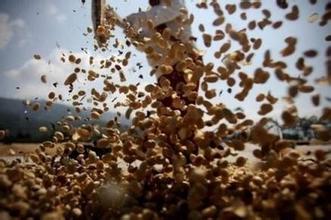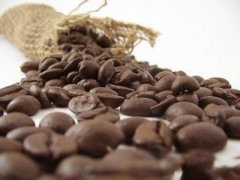Coffee Bean Processing
Coffee fruit
After the fresh coffee fruit is harvested, it should be dealt with immediately. Refining is to remove the skin and pulp of the coffee fruit, and then remove the seed from the shell, which is what we often call raw coffee beans. The refined coffee beans are still raw beans, and then they are roasted to produce the various flavors of coffee beans that we usually drink.
Coffee refining methods are mainly divided into three categories: drying method, water washing method and semi-washing method. Generally speaking, the coffee fruit of 5000KG can be obtained from 1000kg coffee raw beans.

1. Drying method
Drying is a traditional processing method of coffee beans, the fruits need to be dried in the natural sun after harvest, and some mechanical drying is carried out at the same time. The process is: harvest → sun field (sunlight exposure) → sheller (remove pulp, etc.) → grading (electronic bean selector or hand selection, screen, etc.) → export.
Dried coffee beans
The color of raw beans treated by drying is yellow, and the water content of coffee beans is generally about 11%, 12%. The advantage is that sun beans have better sweetness and mellow thickness, and less sour taste, which many coffee fans like very much. The disadvantage is that due to the use of artificial and natural treatment methods in the process, the sun-cured beans do not look good in appearance, do not look good, the quality is unstable, and there will be greater ups and downs.
Dried coffee beans
2. Washing method
Water washing is the most popular treatment method at present, and most boutique coffee beans will choose water washing method. Washing coffee refining process: harvest → storage tank (removal of impurities and impurities) → pulp removal machine (removal of pulp and impurities) → fermentation tank (removal of mucous membrane on endocarp) → washing pool (selection of light and hard beans) → sun drying field (or dryer) → sheller (removal of endocarp) → grading (electronic bean selector or hand selection, sieve, etc.) → outlet.
Washing drying field
The appearance of coffee beans processed by washing is neat, and the impurities and defective beans are less, and the water content of coffee beans is generally about 16%. The advantage is that it has less miscellaneous flavor, clear taste and bright sour taste; the biggest disadvantage is that coffee beans are easy to get sour and astringent taste during fermentation, and a fermented bean will spoil 50 grams of beans.
Yejasuffe G2 / water washing method
3. Semi-washing method
Semi-washing, also known as "honey treatment", is a compromise between drying and washing, eliminating the need to ferment coffee fruits. Harvest → cistern (remove impurities and immature beans) → pulp removal machine (remove pulp and impurities) → washing pool (select light and hard beans) → sun field (or dryer) → sheller (remove endocarp) → classification (electronic bean selector or hand selection, sieve, etc.) → outlet.
Coffee fruit after taking off the pulp
The quality of honey treatment is more stable than that of drying treatment, but not as good as that of washing treatment. This method of processing coffee beans by honey treatment has recently been sought after by coffee lovers. It has a sweet taste and is rich in Crema. It is suitable for extracting Espresso from the base of Italian coffee. The advantage is that it can restore the flavor of coffee beans, the coffee is more sweet, and the taste of red wine is outstanding. The disadvantage is that coffee beans are very vulnerable to contamination and mildew during the drying process after the exocarp of coffee berries are removed.
Important Notice :
前街咖啡 FrontStreet Coffee has moved to new addredd:
FrontStreet Coffee Address: 315,Donghua East Road,GuangZhou
Tel:020 38364473
- Prev

The art of roasting coffee beans
The Americans like shallow baking, while the British love deep baking. In the baking world, there is no unimpeded passport.
- Next

Select coffee beans
01. When buying, pay attention to whether the color of the beans and the size of the particles are the same. Good coffee beans are shiny and have a strong aroma without being mixed with peculiar smell. 02. No matter what kind of coffee beans, freshness is an important factor affecting the quality. 03. When shopping, grab one or two coffee beans and chew them in your mouth to make a clear sound (indicating that the coffee is not damp) and to leave fragrance on your teeth and cheeks.
Related
- Guji coffee producing area of Guji, Ethiopia: Humbela, Shakiso, Wulaga
- What is the most expensive variety of Qiloso in BOP multi-variety group?
- How to store the coffee beans bought home?
- Why are Yemeni coffee beans so rare now?
- Ethiopian Sidamo all Red Fruit Sun Sun Santa Vini Coffee beans
- SOE is mostly sour? What does it mean? Is it a single bean? what's the difference between it and Italian blending?
- Is Italian coffee beans suitable for making hand-brewed coffee?
- How to choose coffee beans when making cold coffee? What kind of coffee beans are suitable for making cold coffee?
- Just entered the pit to make coffee, what kind of coffee beans should be chosen?
- Can only Japan buy real Blue Mountain Coffee? What are authentic Jamaican Blue Mountain coffee beans?

